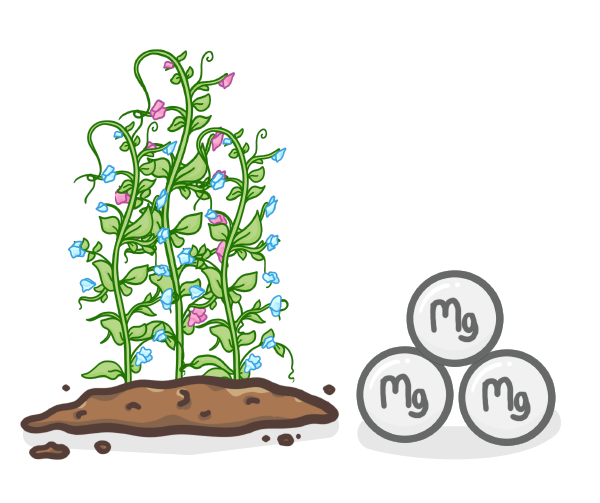Plant Diseases & Defences
This lesson covers:
- How to tell when a plant has a disease
- The defences that plants have to help prevent disease
The three main causes of plant diseases:
- Infection by microorganisms such as fungi, , or viruses.
- Attack by larger organisms, such as insects.
- Lack of essential , such as nitrates, or magnesium ions.
|
Why do plants require nitrates?
To make lipids
To make chlorophyll
To make proteins
To make carbohydrates
|
Which of the following is a symptom of nitrate deficiency (lack of nitrates) in a plant?
Stunted growth
Chlorosis (yellow leaves due to lack of chlorophyll)
Small holes in the leaves
Brown spots on the leaves
|

Why do plants require magnesium?
To make proteins
To make chlorophyll
To make lipids
To make carbohydrates
|
What is the main symptom of magnesium deficiency (lack of magnesium) for a plant?
Purple leaves
Chlorosis (yellow leaves due to lack of chlorophyll)
Brown spots on the leaves
Small holes in the leaves
|
List three physical changes that could indicate that a plant has a disease.
|
Give three ways in which plant diseases can be identified.
|
Plants have many defences against pathogens. What do we mean by physical defences?
Defences that physically prevent the entry of pathogens
Chemicals that plants can secrete to destroy pathogens
Structures that reduce the chance of being attacked
|
Which of the following plant defences are considered physical defences?
(Select all that apply)
A waxy cuticle on the leaves and stems
Strong cellulose cell walls
Production of antimicrobial substances
Layers of dead cells around the trunk (bark)
Thorns and hairs
|
Plants have many defences against pathogens. What do we mean by chemical defences?
Chemicals that plants can secrete to destroy pathogens
Structures that reduce the chance of being attacked
Defences that physically prevent the entry of pathogens
|
Which of the following plant defences are considered chemical defences?
(Select all that apply)
Production of poisons that kill insects
Production of antimicrobial substances
Mimicking other organisms to trick animals
Layers of dead cells around the trunk (bark)
|
Plants have many defences against pathogens. What do we mean by mechanical defences?
Chemicals that plants can secrete to destroy pathogens
Structures that reduce the chance of being attacked
Defences that physically prevent the entry of pathogens
|
Which of the following plant defences are considered mechanical defences?
(Select all that apply)
Hairs and thorns
Production of antimicrobial substances
Mimicking other organisms to trick animals
Leave that curl or droop when insects land on them
|